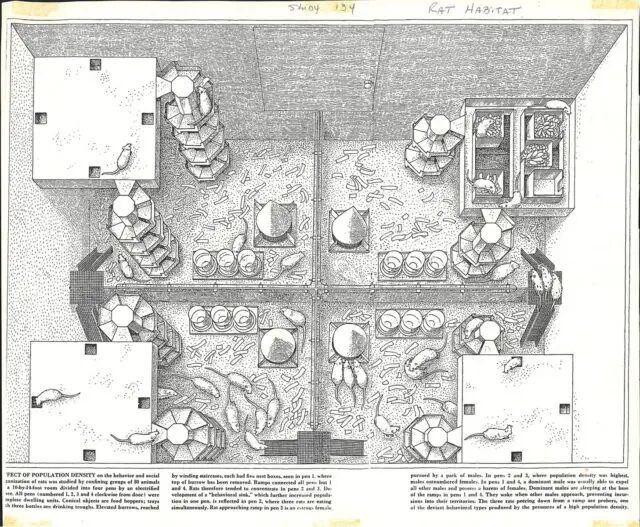Since the discovery of writing, we know that humanity has wanted to know themselves. Humans first started with themselves to suppress the most heartfelt and voracious drive for discovery. Today, one of the greatest existential problems of the 21st century remains unchanged. The urges that make us ask, “What is a human, from the core to the whole?” still haven’t received the answers they seek, unfortunately.
Even though it is a subject of groundless debates, I fully support the notion that “humans are social beings.” Of course, exceptions exist, and contrary to what is believed, I think the number of asocial or people who dislike others is higher. I suggest it is around 20% for all societies. I’m not saying this randomly; I’m basing it on the famous 80-20 rule named after the economist Vilfredo Pareto.
What Is the 80-20 Rule?: Introduced by an Important thInker In management, Joseph M. Juran. It gets Its name from the ItalIan economIst Vilfredo Pareto, who observed that 20% of people owned 80% of the land. ThIs rule fundamentally relies on the Idea that in any sItuatIon, a large majorIty of results come from a small number of causes.
Therefore, regardless of the ratio, it doesn’t change the fact that these people are among us. Some call it nature, creation, taste, interest, or education. I think it’s an unnecessary subject to dwell on because accepting people as they are is the best and most correct way from every perspective. The biggest mistake is attempting to change them.
Society is made up of clusters; when you separate them into individual parts, you feel the colours changing, the smells distinguishing from one another, and the sounds differentiating. However, from the outside, society generally presents a whole appearance.
Attributing the problem to the whole is usually an attitude exclusive to the military. Although we think the punishments given or not given affect the individual, in the end, society itself is the one that suffers. How? Like other living beings, humans interact. Don’t get me wrong; I’m not saying they talk to each other. “Interacting” happens in the daily manner we frequently do, such as sitting next to each other, looking at each other’s faces, touching, or walking side by side or in the same line, and we don’t need to know each other for this. Therefore, individuals are smaller parts with the capacity to affect the general society in a domino effect, whether we like it or not.
Within the individual, there are areas where the 80-20 rule is valid. For example, while an individual realizes 80% of their education, 20% of the contribution comes from their family and surrounding people. Despite receiving the same familial education, two individuals from the same household can have entirely different personalities. One can be very depressive/aggressive and active, while the other can be more delicate/naïve and passive. These kinds of examples can be extended for pages. These individuals choose 80% of their education based on their tastes, preferences, and orientations, and their personalities are shaped in this direction. For this reason, the most crucial part of society is not the family but the individual themselves.
Another important factor for society is the population. Every population and the living beings that form it have a certain number/quantity they should be in nature. There is a specific number of people that can live in a given area, for example, the entire globe. Although there isn’t an exact number, it is estimated between 9.5 billion and 10 billion. These values are calculated over a long time considering all other needs such as food, water, energy, space, etc.
So, what happens if our number exceeds this calculation significantly, for example, reaching 14 billion? Let’s talk about an experiment that answered this question and find the answer there.
The Universe 25 experiment is a well-known study among enthusiasts. John B. Calhoun designs an experiment where initially, eight healthy and happy mice (4 males and 4 females) are carefully selected. These mice are placed in a carefully designed, comfortable cage setup with rooms, a large plaza, and stairs. Furthermore, until the end of the experiment, none of the mice were allowed to suffer from a lack of food or water; they lived in great abundance regarding food and water.
The Universe 25 experiment took place in an aquarium with a base area of 6.25 square meters and a height of 90 centimetres. On each wall of the aquarium, there are 16 tunnels rising to a height of 50 centimetres, and each tunnel contains four rooms. The aquarium has a total of 256 rooms, meaning that when packed like sardines, the aquarium could hold 5-6 thousand mice, including the ground. Other than feeding the mice regularly and cleaning the aquarium’s floor every six weeks, there is no external intervention for the mice throughout the experiment.
On the 105th day, the first individual of the second generation of mice is born, and the total number of mice in the aquarium rises to 9. Seeing no problems, the mice increase their breeding rate, doubling the population every 55 days.
This situation leads to an excessively rapid increase in population. The mouse population, which was 8 in the first 104 days, exceeded 600 by the 315th day. From this point, the crowded population starts to trigger chaos. Mice cannot play or feed comfortably as they wish. Additionally, competition among male mice causes the weaker ones to lose their nests.
Chaos naturally triggers violence. Mice that have to stay on the ground because they lost their nests attack, bite, or chase the mice next to them due to the anger of not having their territory. Violence spreads from the ground to the rooms, with ground mice raiding rooms, killing the mice inside, and taking over the rooms.
While all this is happening, the amount of food and water provided increases proportionally with the mouse population. So, hunger is not what triggers the mice’s violence. Moreover, remember that we mentioned at the beginning of the article that the aquarium could accommodate 5-6 thousand mice. However, chaos and violence broke out even when it reached only 10% of this capacity. Female mice, to avoid competing with males, start living alone and eat some of their young. The mice Calhoun calls ‘beautiful ones’ separate from the others and withdraw to the upper rooms. These mice, detached from society enough to close the doors of their rooms, stop reproducing after a while and enter a sort of safe mode in their lives.
Cannibalism, infanticide, and infectious diseases run rampant among the remaining mouse society in the experiment. Some male mice try to mate with all females, similar to the dominant male monkeys in monkey colonies. Considering that mating is the second non-negotiable point after food for males, it’s understandable that this behaviour increases murders among males.
By the 560th day, the mouse population reaches 2200. However, due to the effects of chaos and violence, the incredibly high mouse population begins to decline rapidly. Only 50 days later, on the 610th day of the experiment, the mouse population dropped below 100. At this point, society is divided into two groups: the ‘elite’ living on the upper floors, avoiding chaos, and those who survived by killing their rivals in a fierce struggle.
At this point, a strange observation occurs. Despite the living conditions being the same between the first 100 mice living on the 250th day and the last 100 mice living on the 610th day, the last remaining 100 mice cannot reach a similar level of welfare due to the painful memories of the past. With the death of the last female on the 650th day, the lineage of the lucky 8 ends entirely.
This experiment has often been used in population planning propaganda. However, it has clearly shown how chaos can arise in overly crowded societies despite their needs being met. The experiment beautifully demonstrated how individuals become aggressive, and society turns hostile, eventually destroying itself when their free spaces are narrowed.
Main photo: Yoichi R Okamoto/Wikipedia
This article is from 2020. To read the original version in Turkish, click here.




